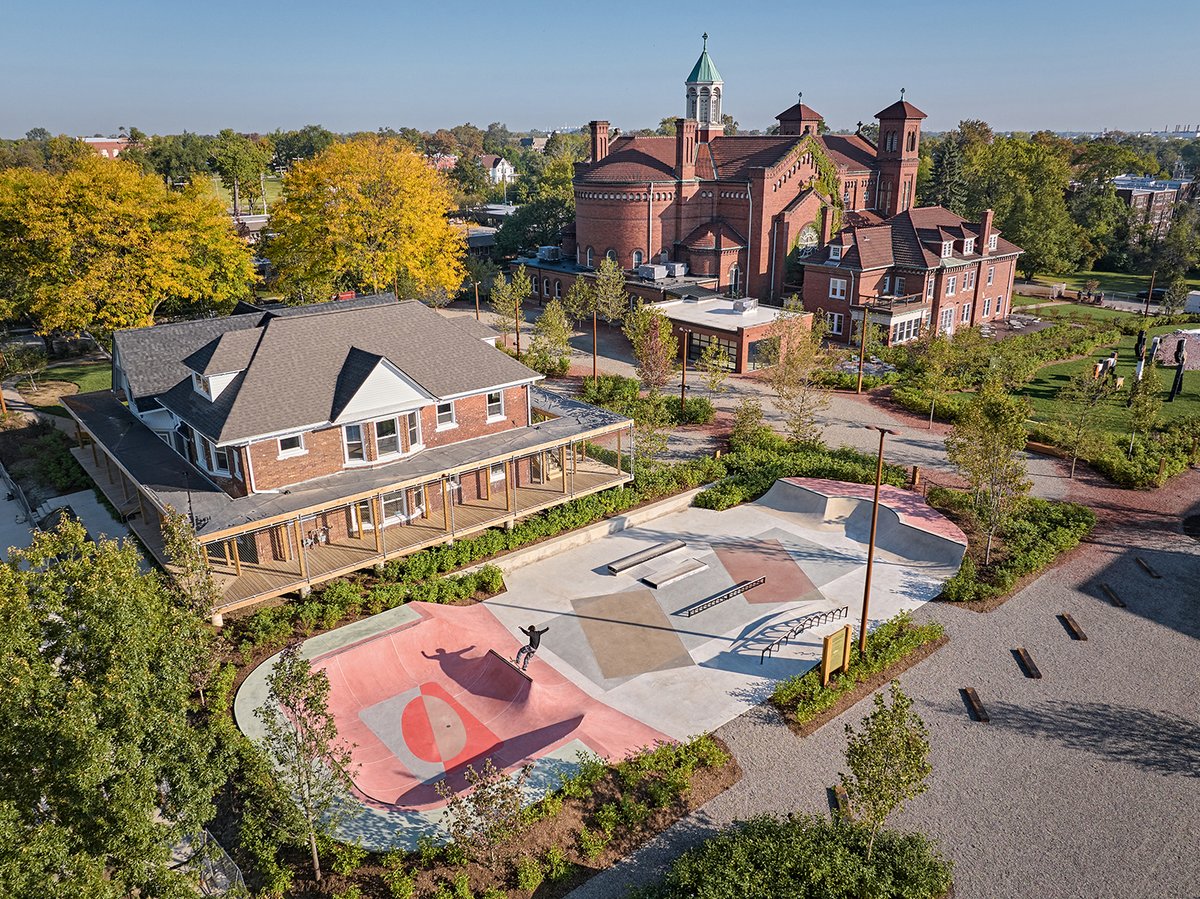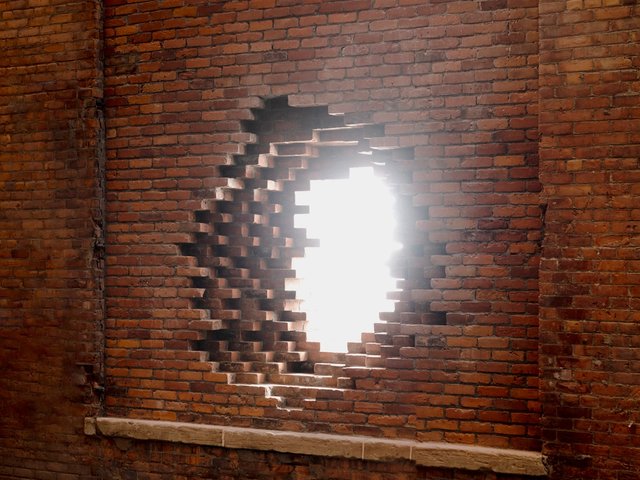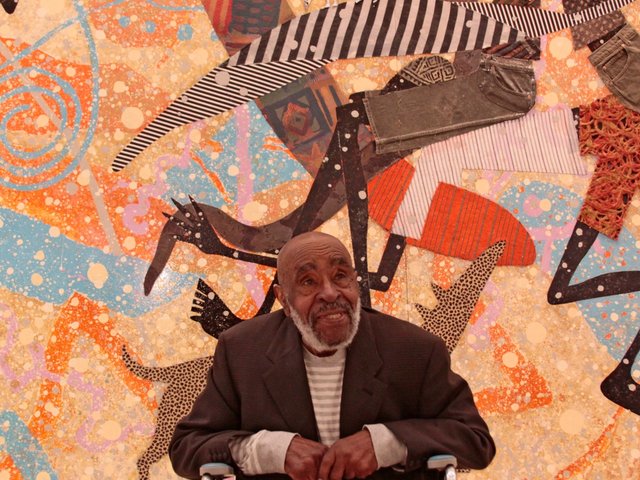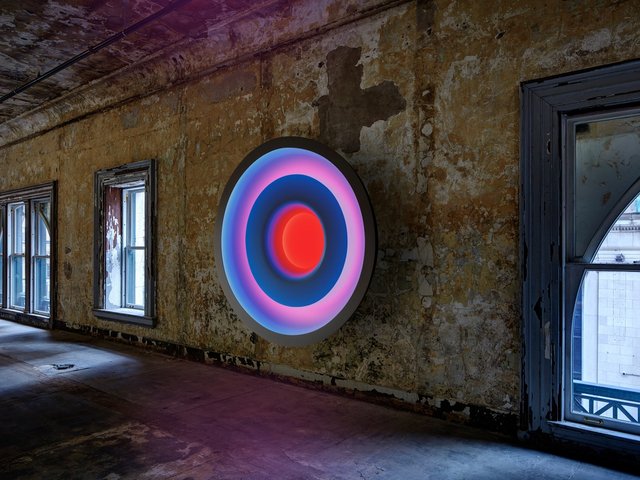The latest newcomer to Detroit’s art scene is Little Village, a sprawling cultural hub in the city’s East Village neighbourhood. Spearheaded by Anthony and J.J. Curis, co-founders of the Detroit-based galleries Library Street Collective and Louis Buhl & Co, the new endeavour is transforming several buildings into an arts and culture campus complete with a church-turned-gallery, a bed and breakfast, and a skatepark designed by the skateboarder Tony Hawk and the artist McArthur Binion.
We came to the realisation that we could make a bigger impact on DetroitAnthony Curis, gallerist
“When we decided to take this next step, J.J. and I spent a lot of time thinking about the community and culture of Detroit,” Anthony Curis says. “We came to the realisation that we could make a bigger impact.” East Village, like many neighbourhoods in the city, has seen decades of decline in population and is now rife with abandoned buildings and untamed landscapes—though a recent report from the US Census Bureau offers a glimmer of hope with a slight uptick of residents in Detroit from 631,366 in 2022 to 633,218 in 2023, the first rise in the city’s population since 1957. “We have great relationships with local leaders and associations who lent their direction of what they hoped for East Village, and we felt this was the right place to expand our vision for Detroit,” Curis adds.
At the heart of Little Village is The Shepherd, a former Catholic church that the Curises have transformed into an arts centre for exhibitions, performances and programming with the architectural firm Peterson Rich Office (PRO). “J.J. and I take preservation, architecture and serving the community seriously, and our job with the team was to honour these and the building’s history both inside and outside,” says Curis. Built in 1912, the church served as a community space for decades before closing in 2016. The interior was subsequently left unused and the site’s four acres of grounds degraded. PRO worked with Simon David of the landscape design firm Office of Strategy + Design to transform the grounds, which now hold the Charles McGee Legacy Park—named for the beloved Detroit artist, who died in 2021—with three large-scale, interactive public sculptures, as well as the new skatepark.
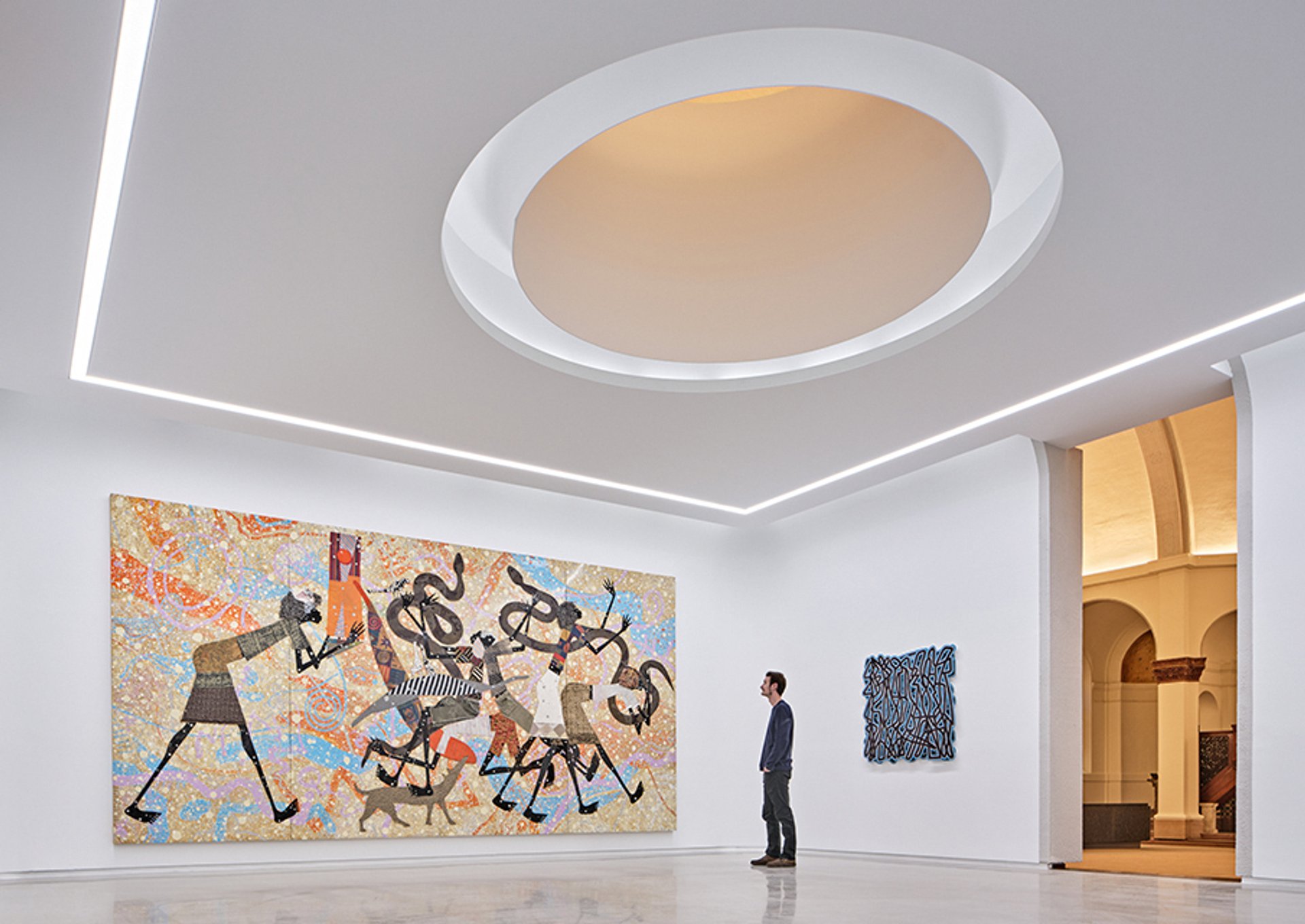
Charles McGee’s Play Patterns II (2011) is part of the Time is Now exhibition in The Shepherd’s main gallery Photo: Jason Keen, Courtesy of the artist’s estate and Library Street Collective
“This project presents a unique combination of community, culture, history and urban change,” says Nathan Rich, a founding partner of PRO. “The design responds to J.J. and Anthony’s vision while layering in the building’s architecture and the different roles it served in the community.” The redesign includes two gallery spaces and a library centred on artists of colour. The new, cube-like galleries are carved out of the large interior and complement the existing colours and architectural features such as stained-glass windows while also “letting contemporary art sing”, as Miriam Peterson, another PRO founding partner, puts it.
All lit up
In addition to The Shepherd, Little Village features Lantern, a former early-1900s bakery and warehouse that architectural firm OMA (Office for Metropolitan Architecture) transformed into a mixed-use building for local non-profit art organisations Signal-Return and Progressive Art Studio Collective, as well as affordable artist studios and food and retail spaces. The redesign highlights the building’s historic features, including an area where the roof went missing that is now an open-air courtyard. The firm also transformed the southern-facing solid walls into an expanse of small cylindrical glass windows that glow, thus earning the name Lantern.
The Shepherd’s inaugural exhibition is Time is Now, a survey of paintings and sculptures by McGee in collaboration with the Museum of Contemporary Art Detroit (Mocad). “In addition to celebrating the passion for arts and community that defined McGee’s practice, the show tells something special about collaboration in Detroit,” says Mocad’s Jova Lynne. “It might not be common for a museum and a commercial gallery to work together in other areas, but collaboration is common here. What The Shepherd and Little Village are doing is an amplification of what’s possible in Detroit.”


